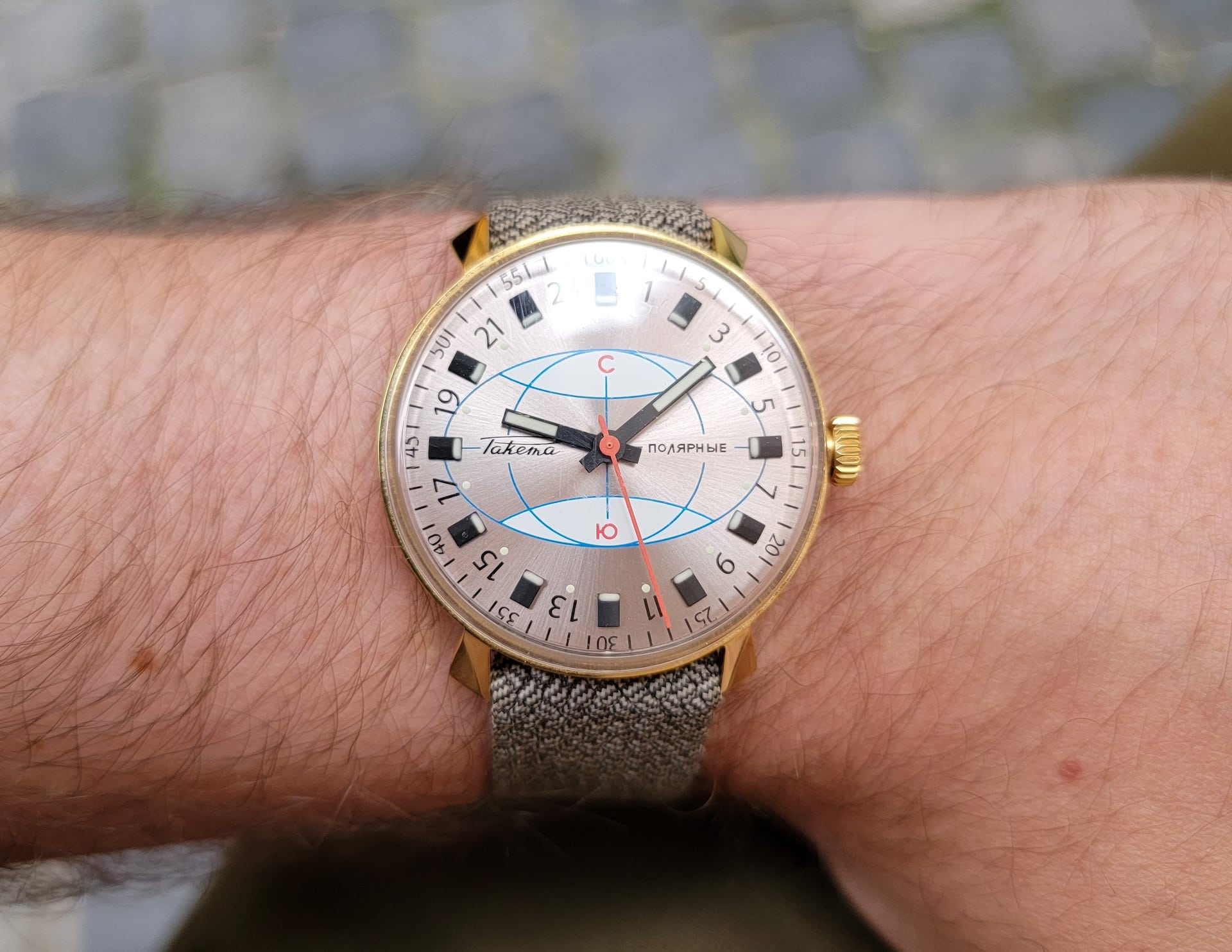I like stuff. I like having it. Knowing that at any instant, I could go get the stuff I have and show other people a different facet of my personality, based on the stuff I now have, and not the stuff I had previously.
I like stuff that tells a story, both based on the history of the place that made it, and the stuff I’ve done while wearing or carrying or using the stuff I got from the place. Watches are the perfect embodiment of that notion of “stuff.” Watches are cool; they’re stylish, and the companies that sell them often have ties to historical figures and events that involved their products.
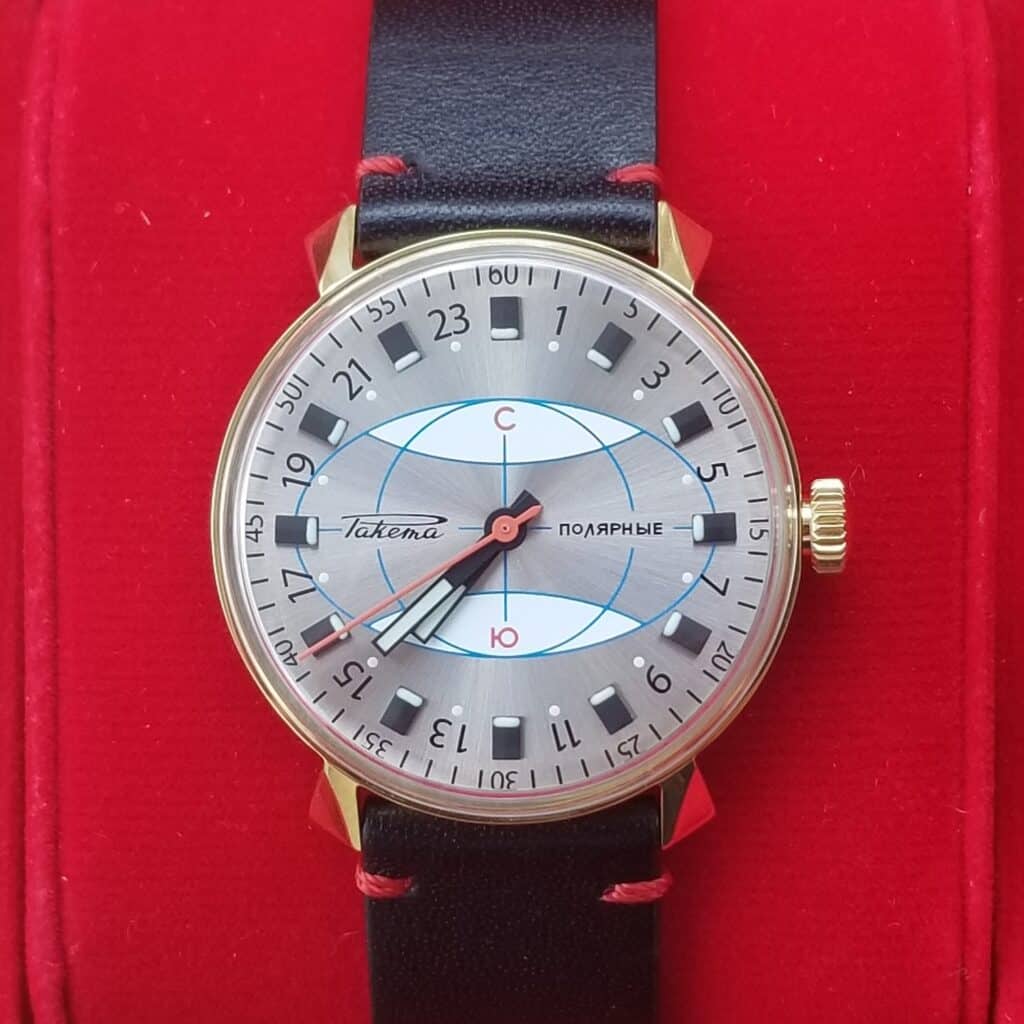
There’s just one problem: I hate when someone tries to sell me a watch. Everyone knows watch marketing is over the top. The problem is, it’s no longer just the companies pushing them. Watch blogs (yes, even this one to some degree), Instagram influencers and authorized dealers, and YouTube watch reviewers all fuel this cycle of “you need and/or should really want this watch.” To paraphrase Kaz and Mike, watches are no longer an object – they’re a statement about your lifestyle.
“Buy our watch,” says one watch brand, “and you’ll show others that you’re a tough man of action, ready to climb mountains at a moment’s notice.” “Buy our watch,” says another watch brand, “and you’ll show others that you’re a person of sophistication, ready to discuss world events and philosophy over a cup of locally-roasted coffee.”
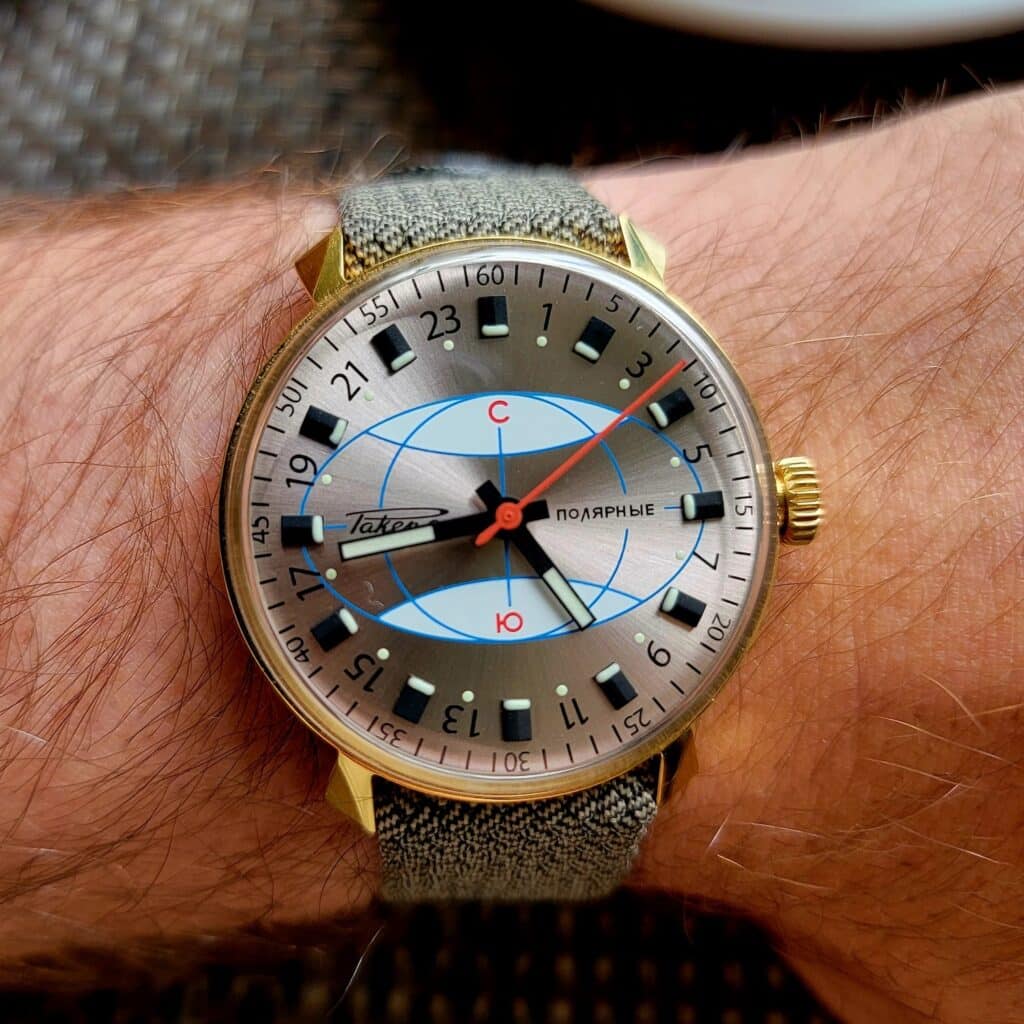
We’re all susceptible to this marketing, especially when starting in this hobby. I bought two Seikos when I first started my watch research, because I read that they were “perfect for beginners.” I absolutely hated them, and sold them soon after. After being in this hobby for about four years, I’ve learned that you need to collect something that reflects the personality you have, not your idealized notion of yourself.
Watch collecting became a greater passion for me when I began relating it to other hobbies and goals I had in my own life. In college, I studied Russian for four years, and continued to study the language after I graduated. Finding the deep well of Soviet and Russian horology supercharged my interest in watches, because I could relate it to the historical events and culture I’d studied so much about. Authenticity became really important to me; in vintage watches, that meant finding non-franken’d examples of whatever watch I was hunting at the time. In modern watches, it meant avoiding things that I saw as “gimmicky,” or over-reliant on advertising a lifestyle or homages to sell a product.
When I discovered the modern iteration of Raketa, I had mixed feelings. On one hand, some of their products relied on gimmicks – like a dive watch that mixes symbols for Imperial Russian navy divers, and the current Russian foreign military intelligence directorate, just because it might look cool. But they do have quite a few solid products that, uniquely, all have in-house movements.
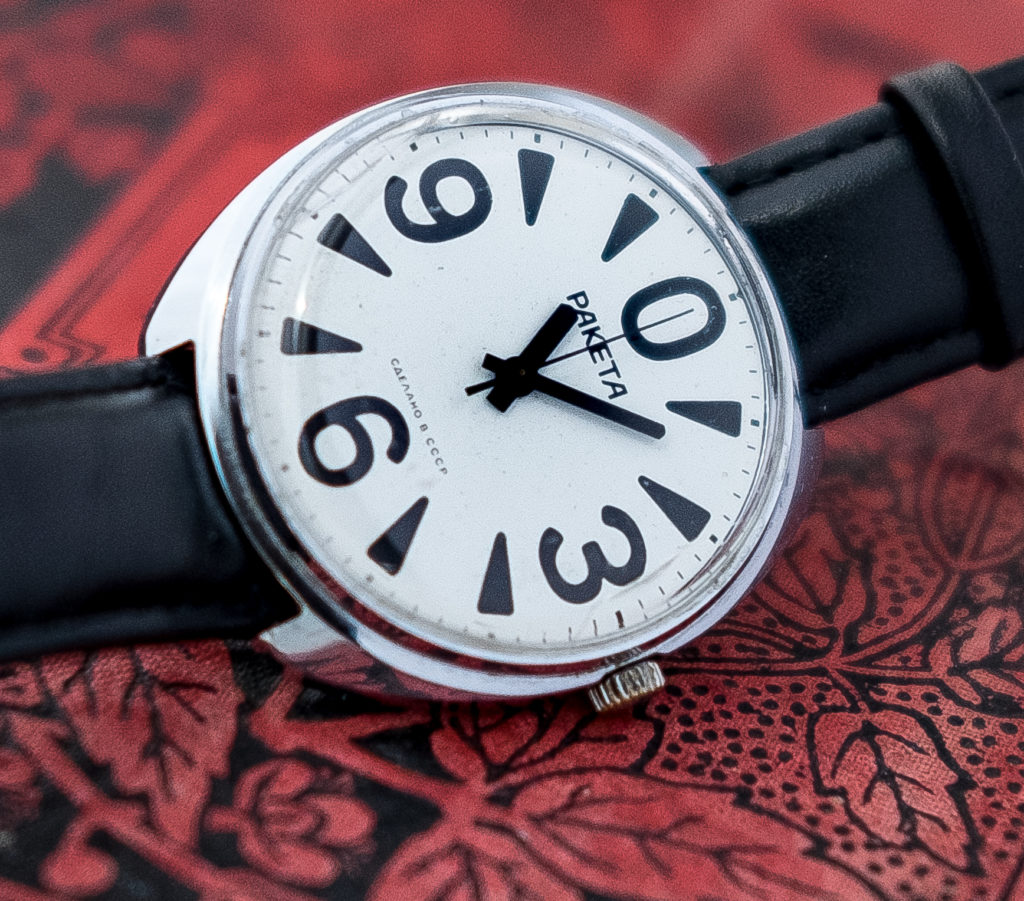
That’s one of the most interesting things about the company. All of their machinery is the exact same machinery that the factory had in the last century – the very definition of “if it ain’t broke, don’t fix it.” Many of the methods on making those parts are the exact same as well, meaning many people working by hand (or at each machine) to make every component of the watch. Monochrome Watches has an article about their visit to the factory – it’s a great read that explains everything in detail.
In early 2020, right before the pandemic struck, Raketa announced that they would be releasing a limited vintage reissue of one of their watches – the Polar. While Raketa already had a Polar model in stock, this one would be set apart by its complete adherence to the old design schematics from 1970. Not only did they re-create the dial, case, and unique acrylic crystal for the watch – they re-created the movement, the 2623, for it as well. To top it all off, the lead engineer responsible for designing the watch was on the original design team fifty years prior. It was as authentic a watch as I was ever going to get.
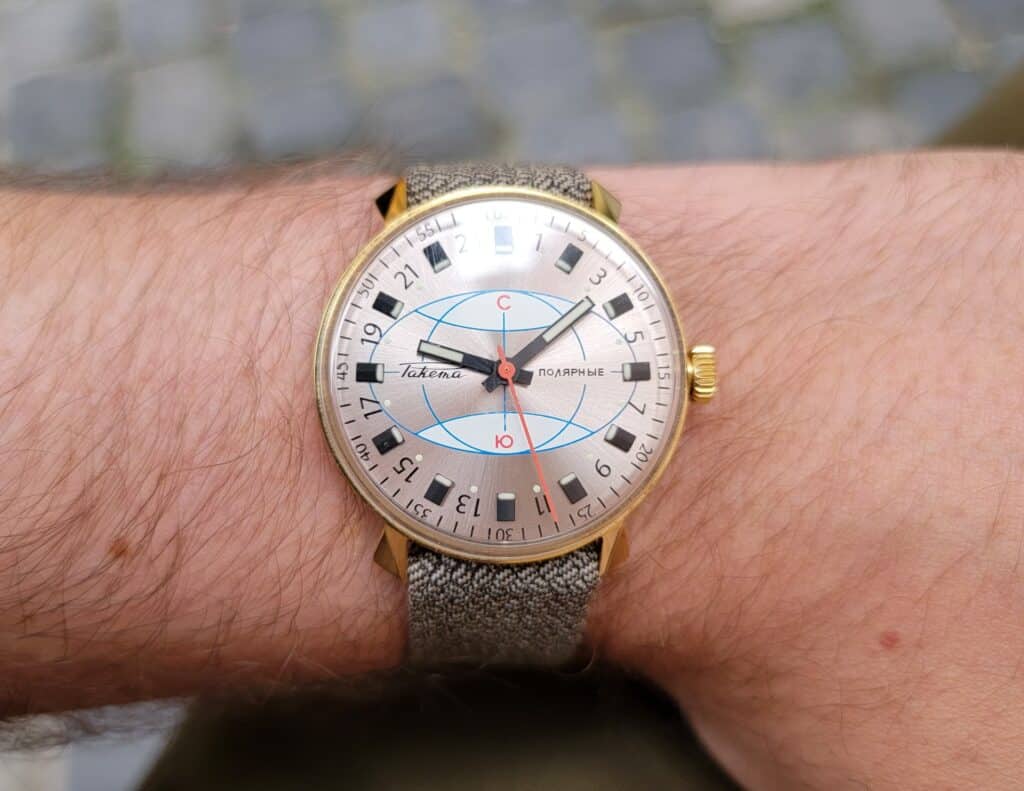
The watch itself is 35mm in diameter, 40mm lug-to-lug, and 12mm in height, including the highly unusual box acrylic crystal. The case features a gold PVD coating and stainless steel back, with multi-faceted lugs, as if it didn’t already have a ton going on. The dimensions of this watch seem small on paper, but thanks to the lack of any bezel, the sheer size of the watch face makes it appear a good deal larger than it actually is. Water resistance for this watch is 30m, which if we’re being honest is fair. I mean, the original watch had to deal with plenty of water; it just happened to be frozen at the time.
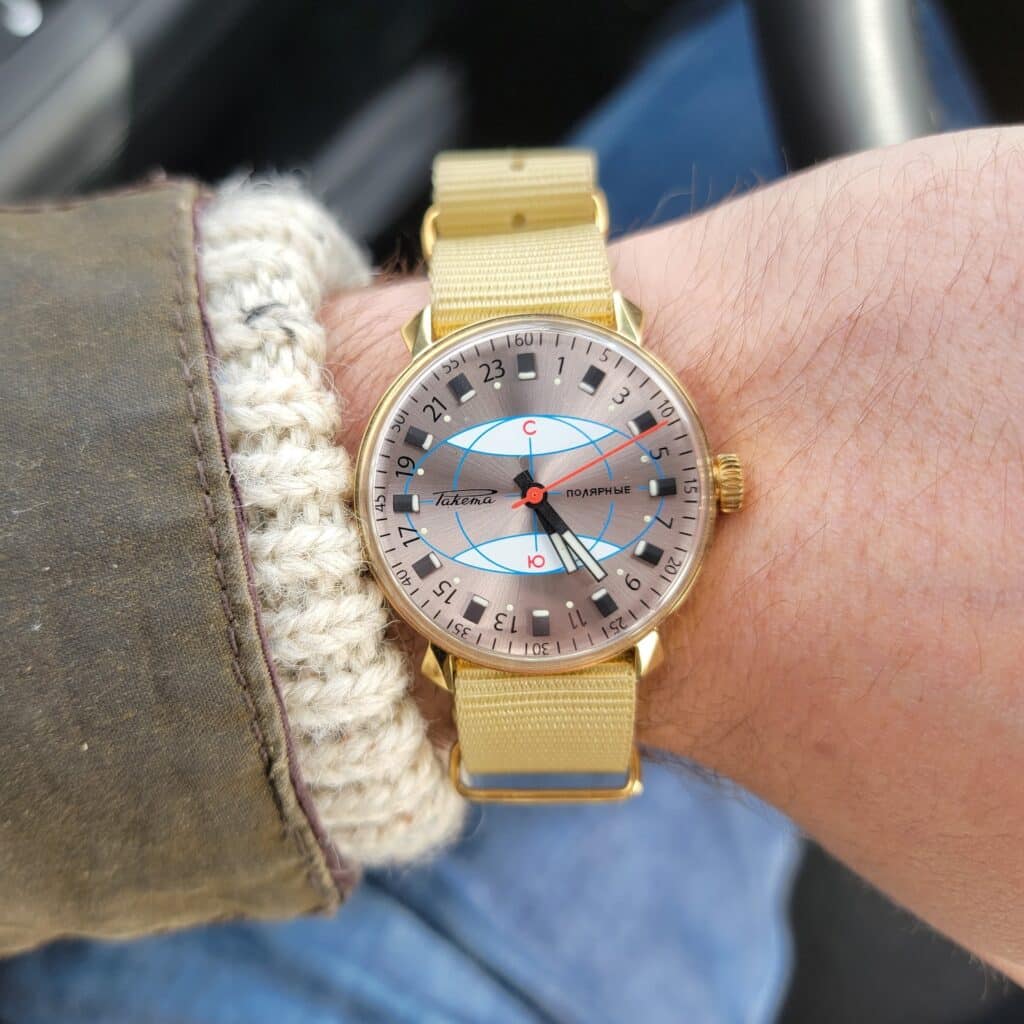
The dial is a brushed silver color, that in the right light turns a shade of champagne. The most noticeable feature of the dial is the stylized globe in the center, with the Russian markings for “North” at the top and, you guessed it, “South” at the bottom. At the edges of the dial you’ll find the hour markers in a 24-hour layout, displayed through an alternating pattern of luminescent dots and applied black markers, matching the hand set. The resulting pattern in the dark looks like morse code, an interesting way of differentiating between the hours on a small, but busy, dial.
The strap that came with the watch was also made in Russia, but not in the factory by Raketa. It’s perfectly serviceable, though I don’t often wear black leather straps. Usually, I wear the watch on either a perlon strap or the NATO strap it came with (ironic, I know), which also has a signed buckle and associated hardware.
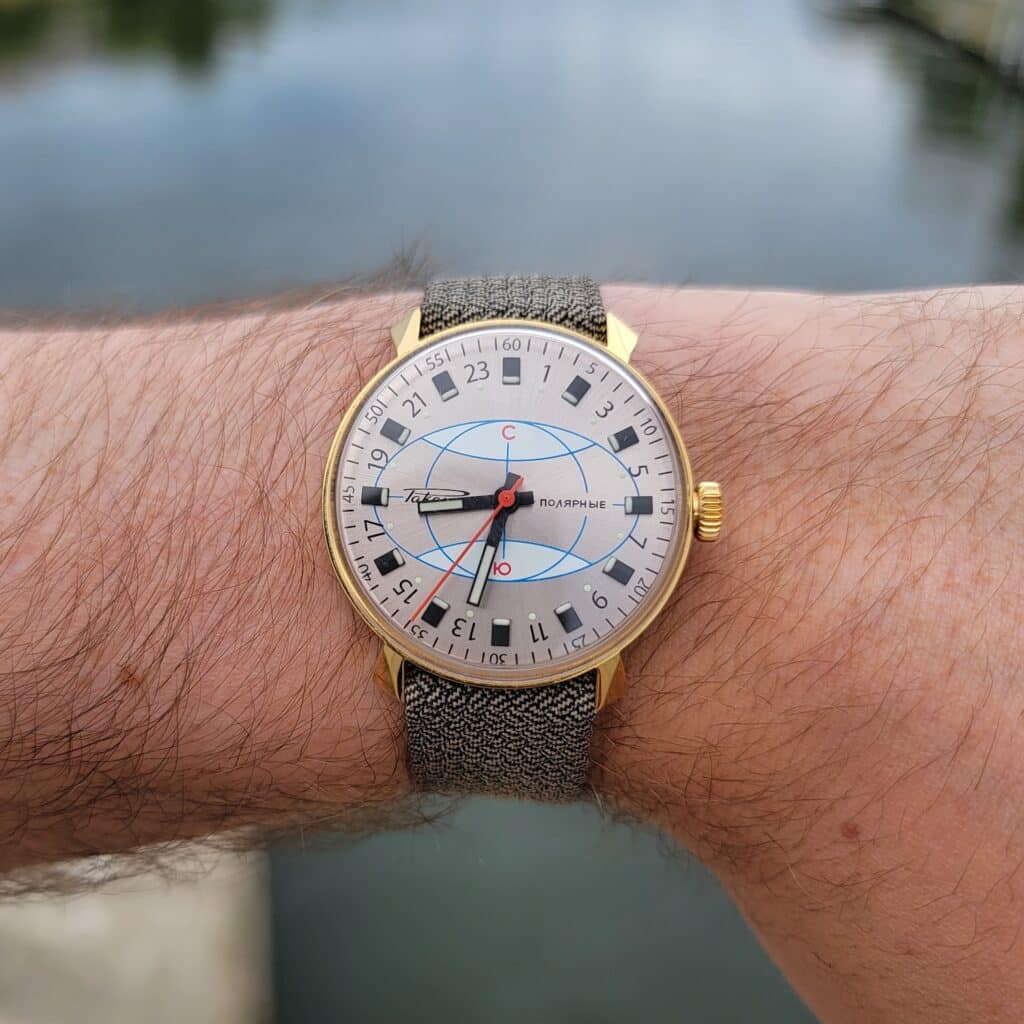
The movement, not displayed on this model, is the caliber 2623, the Soviet Union’s first 24-hour watch. The purpose of developing a 24-hour movement was specifically for polar explorers. Depending on the time of year, there is either endless light or darkness at the poles, meaning that crews needed a way of differentiating day from night. The 24-hour movement has become something of a signature for Raketa, with plenty of space-themed and pilot watches utilizing this movement type. While the rest of Raketa’s watches are automatic, the Polar 0270 is a hand-winding movement, in keeping with the original.
I knew that I was going to buy this watch as soon as I saw it. The release material didn’t advertise its toughness, its durability, and it didn’t try to sell me on who I was going to be if I wore it. While they did emphasize the story behind it – given to members of the 16th Soviet Antarctic Expedition – it wasn’t implied that it was an essential piece of Arctic-exploring kit, or that it was the toughest watch they’ve ever made. This was a reflection of their history as a brand, and a tribute to watches as part of a broader story, which is what interested me in this hobby to begin with.

I don’t care that the water resistance on this thing is 30m. While I’ll never go swimming in it, I’ve done plenty else while wearing it. It’s accompanied me as I’ve begun traveling again, and while I do the mundane, daily tasks that make up most of life; I attend work meetings, study Russian, and take care of chores around the house. I even proposed to my now-fiancée while wearing it!
I’m not trying to sell you on this watch, or Raketa watches in general. This was a limited edition, and is now long sold-out. Rather, this article is a reminder that this hobby is supposed to be something that’s a reflection of your personality. Your personality shouldn’t be a reflection of whatever is new in the wider watch community.

If you want to wear a Rolex while climbing a mountain, awesome. But don’t let Rolex tell you that you need one of their watches to do so in the first place. And don’t buy one thinking that you’ll spontaneously start climbing them, either. Whatever you choose to buy, make sure you’re doing it for you.
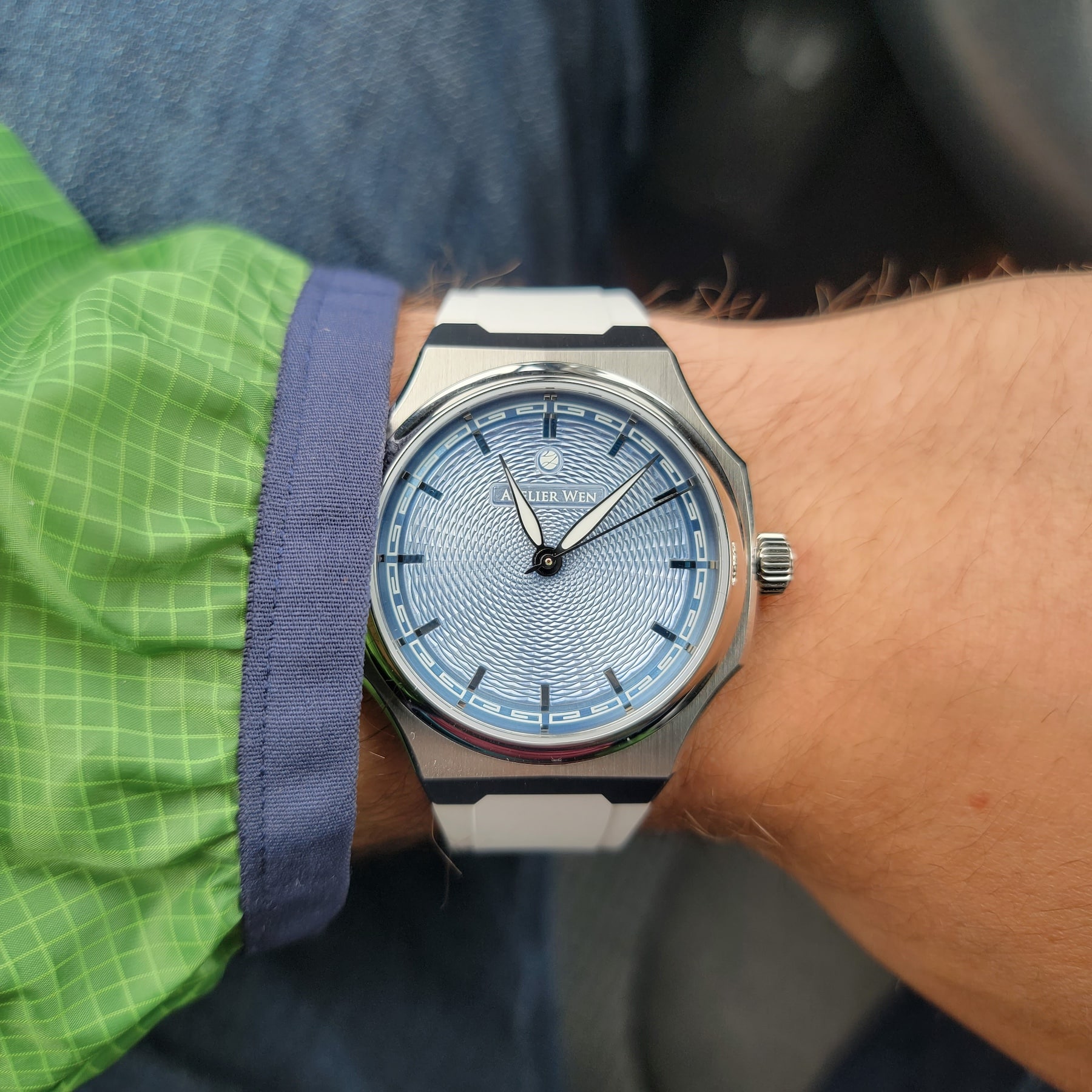
John began collecting watches in 2018, when he realized that the hobby meshed well with his love of studying history and researching obscure topics. In addition to watches, John enjoys collecting fountain pens, learning languages, reading, and traveling.
